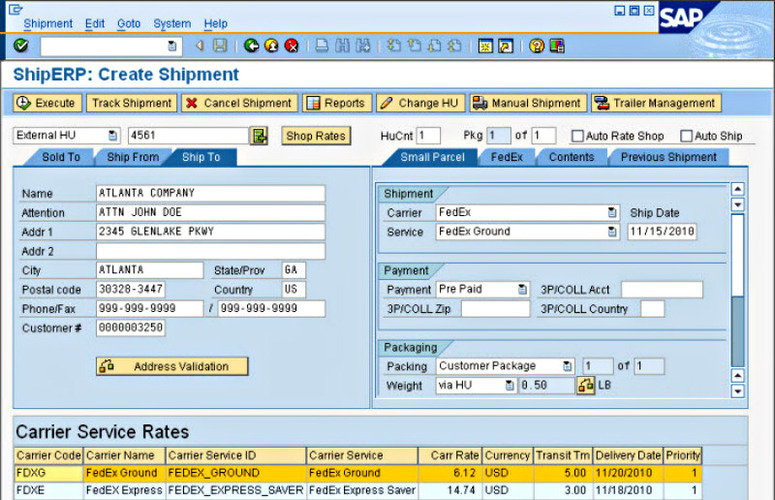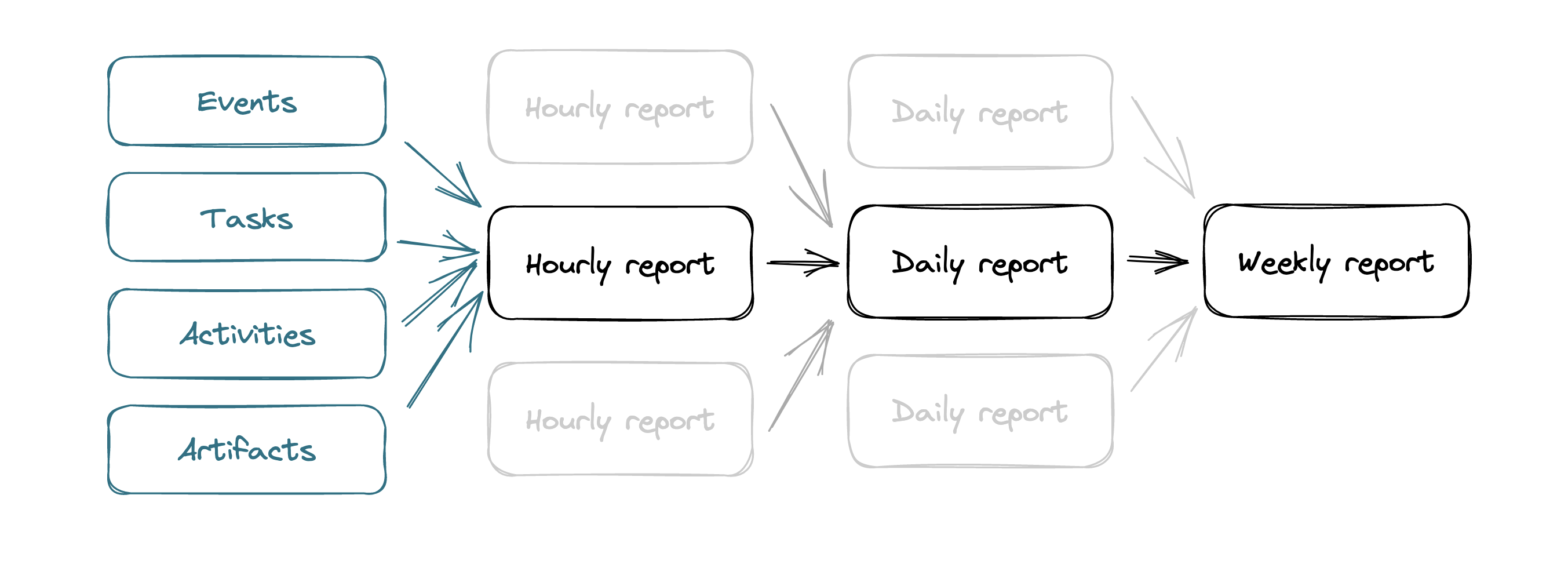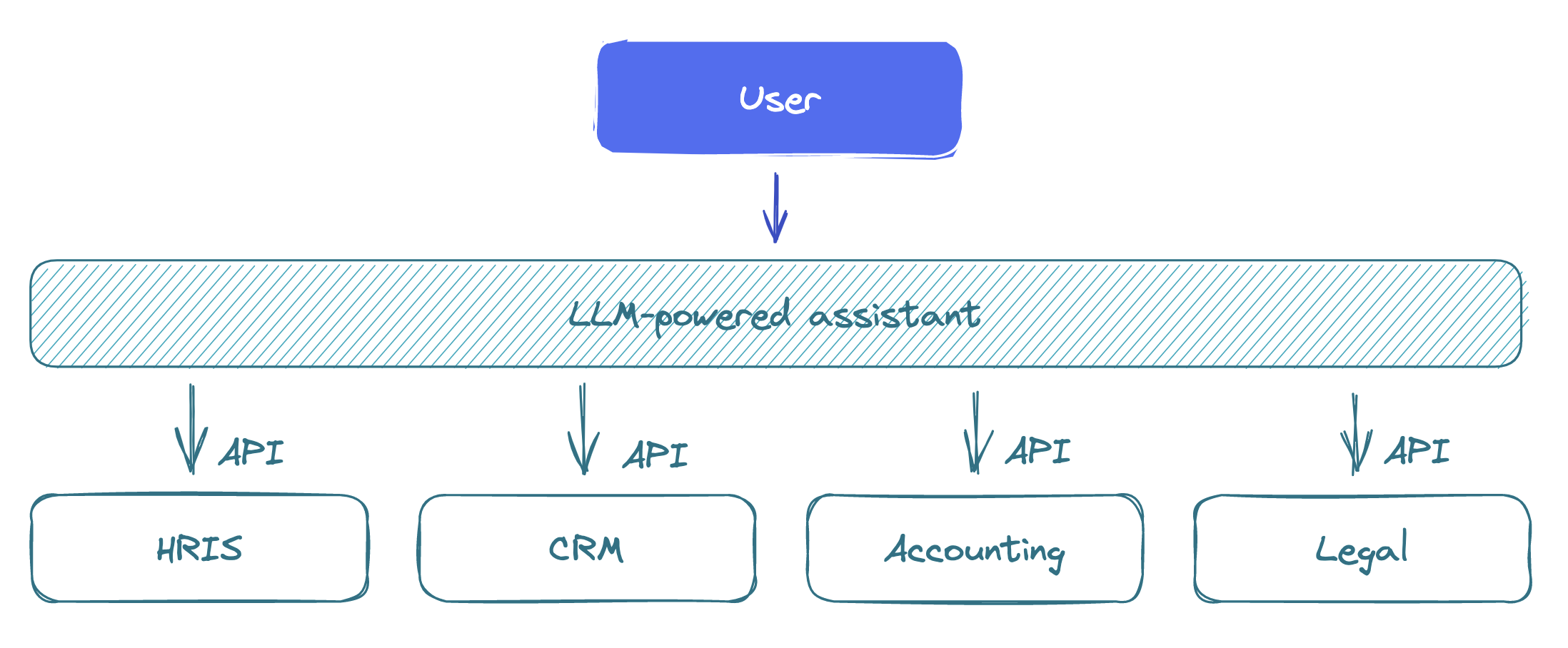Opinion: The Future of Business Apps
Mar. 24, 2023Recent advancements in Large Language Models (LLMs) will change how we interact with internal business applications. Language interfaces will dominate most non-advanced use cases: look up specific data points, update data fields, and send, receive, and summarize messages across channels (email, IM, Slack, etc.). It’s unlikely that users would use LLMs in every business app, even though every business app will try to integrate them to catch up with the trends. It’s more likely that there would be a handful of assistant-type interfaces (work, personal, etc.) connected to various tools through APIs. As a result, any SaaS will be expected to have APIs as its primary interface.
Historically, console and graphic interfaces on desktop and then on the web have been dominating the ways people interact with business apps - they usually log in and then find the menu, find the item they need, and look at 100s of data points to find one they are looking for, sometimes they search, or update data points in extremely overloaded forms, like this one below:

Even though SaaS interfaces, especially ones with a product-led growth (PLG) model, are getting very user-friendly, the amount of information that needs to be processed by a single person will grow. It is well known that simple interfaces get more complicated over time (try to find how to disable a camera shutter sound in iOS settings in 5 seconds, I bet you won’t be able to). Average interfaces get loaded with features and settings (classical feature creep with 100s of properties over dozens of tabs on the Settings page).
But with LLMs improving so quickly, there is no doubt that a lot of interaction will happen using voice and text. LLMs are great at making conclusions and compressing small to medium amounts of information into summary reports, but they are not a silver bullet. The core is still the data. And data is messy: integrity, accessibility, and security are some of the biggest challenges to name a few, and LLMs will be unlikely to address them (at least for now).
Examples
Let us look at a few examples of how LLMs could help to create superior business workflows.
For example, if you are a sales manager and your want to check how your sales reps are doing, you would probably have a Salesforce dashboard configured for you by your sales ops team, which you look into a few times a week to know what’s happening or to prepare for a review. Most of the information you need is aggregation across different dimensions and parameters. Questions like:
- What are the sales reps that need help?
- Are there any deals that are not moving fast enough, and why?
- And finally, will my team hit our quarterly/annual goals?
All of that relies on several things:
- Data integrity and security
- Data availability: your (or sales ops) ability to query it.
The last one is where I think LLMs will be transformative - being fed with complete and accurate information through APIs, they can compress any sizable amount of information into a short one-page report/memo for any employee, from an individual contributor to a CEO.
Another example. You are a product manager working with a team across five time zones. The team uses multiple communication and coordination tools, which is typical for bottom-up organizations.
The current way to get a good sense of where things are going is stand-ups - not many people are big fans: it’s hard to get together across time zones, and mostly they look like status updates. That is extremely important to know what is going on, but not for everyone.
The team is fighting the issue of silos, and the solution is getting to the source of truth. What if all the data was passively collected (transcribed calls, Slack chats, Jira tasks, and other artifacts) and compressed into reports with regular cadence (hourly, daily, weekly, etc.)? Then any person on the team could be able to ask:
- What are the critical things that the team delivered this week?
- What are the most significant risks and blockers that the team encountered today?

In this scenario - anyone in the company will have access to any granularity of the information about progress/risks/opportunities for any group or team. Even a CEO could be able to ask: “What have we launched in the last month?” with no one need to have a dedicated person to report on that. That is the next level of the BI system here that would be able to draw a complete picture of anything with a desired level of granularity in a one-page memo.
Does that mean the graphical user interfaces (GUIs) will be unnecessary? GUIs would still be helpful for advanced use cases and power users. The majority of non-advanced business user interactions with a system could fall into a few categories:
- Get me a data point for a record X.
- Update a data point for a record X.
- Give me the top/bottom 3-5 items from collection X using selection criteria Y, Z, etc.
LLMs would be a great fit to cover most of those requests, and GUIs could address the rest.
Conclusion
The future of business apps is unlikely to have 100s of text/voice interfaces built into each SaaS requiring users to log in. It would likely be one LLM-powered assistant (or a few) integrated into 100s of API-only function-specific backends that power the internals of the organization. Those assistants could pull and summarize data from hundreds of sources and give users a simple interface that requires very little onboarding.

With business apps specialization and growing productivity with an expectation to deliver more economic value (per Adam Smith), there will be a greater and greater challenge to access and manage an exponentially growing amount of information, and LLMs could potentially address those challenges and give a room for another leap in productivity growth.
As a result, business apps will become data storage with business logic units, acting as sources of truth but less as interactive interfaces for end users.
A sales rep having a sales call would not need to log in to Salesforce to update the meeting notes and create action items. All of that data will flow into the systems automatically. So the next day, they will be able to ask their go-to LLM app: “What are the important things I need to do today?” and will get a list of proposed activities aggregated across all of their accounts into a clean and easy-to-digest format so that they can focus their whole day on clients and very little admin.
P.S. While finishing the draft of this post, OpenAI announced their plugin ecosystem, which confirms the user experience direction described above.